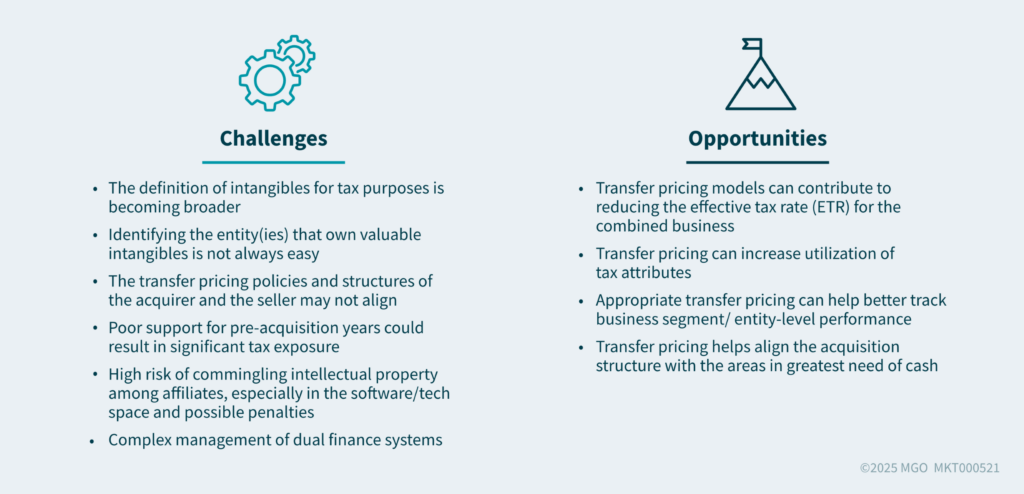Key Takeaways
- Tax due diligence is essential, with 78% of participants emphasizing its role in identifying risks, uncovering tax-saving opportunities, and ensuring smooth add-on acquisition planning.
- Proper structuring in add-on acquisitions can maximize deductions, optimize legal entity structures, and improve financing efficiency, with 60% of respondents citing entity structure as their top concern.
- Transfer pricing remains a key challenge, as mismanagement can lead to costly tax adjustments, compliance risks, and integration difficulties for acquiring companies.
—
This insight was developed following a recent BDO Tax Strategist Private Equity webcast about the intricacies of add-on acquisitions and cross-border transactions. We believe that these insights can deepen your understanding of these complex transactions and learn how to navigate associated tax implications effectively.
The Importance of Tax Due Diligence
78% of participants typically perform due diligence to manage the risk of unknown tax exposures in connection with their deals, according to BDO’s webcast responses.
Tax Due Diligence Helps Detect Material Exposure and Should:

Tax Considerations for Structuring and Add-on Acquisitions
Debt structuring is crucial in add-on acquisitions because companies often borrow significantly to finance the deal.
As a result, you should consider increasing potential deductions related to financing and other transaction expenses, which can lower the overall deal cost.
In addition to structuring debt for tax efficiency, selecting an appropriate legal entity structure is also key. Without it, your company may find itself in inefficient structures that make intercompany transactions and profit improvements challenging.
Tax Considerations for Add-On Acquisitions Include:
- Legal entity structure
- Tax basis step-up
- Sponsor holding period
- Management rollover
- General debt and lending considerations
- Cross-border collateralization of U.S. Debt
- Foreign repatriation and withholding tax
60% of participants cited legal entity structure optimization as the tax issue they are most concerned about regarding the structuring of add-on acquisitions.
Transfer Pricing
When asked to identify the most significant challenge their organization faces related to transfer pricing, participants cited the following:

Arm’s Length Standard
A controlled transaction meets the arm’s length standard if the results of the transaction are consistent with the results that would have been realized if uncontrolled taxpayers had engaged in the same transaction under the same circumstances.
Transfer pricing plays a critical role in deals, as any overlooked issues become the responsibility of the buyer. If the target company has not responsibly managed its transfer pricing, the buyer’s risk of adjustments in open audit years may increase and highlight potential challenges in integrating the tax structures of the combined business. For example, taxpayers are restricted from amending or filing late U.S. tax returns that reduce U.S. taxable income because of transfer pricing. This can potentially lead the buyer to face costly adjustments or even double taxation.
Types of Intercompany Transactions
The Four Main Intercompany Transactions and Examples of Each

Transfer Pricing in Practice
Transfer Pricing in connection with acquisitions can create challenges and unique opportunities for tax planning.

Responses from participants in BDO’s Tax Strategist Private Equity Webcast: Enhancing Value in Add- On Acquisitions: Domestic and International Insights
How MGO Can Help
MGO’s experienced tax professionals provide strategic guidance on add-on acquisitions, cross-border transactions, and transfer pricing compliance. From conducting thorough tax due diligence to optimizing legal entity structures and ensuring alignment with global tax regulations, we help private equity firms and businesses navigate complex tax implications. Our team works closely with our clients to uncover tax-saving opportunities, mitigate risks, and streamline integration, ensuring a tax-efficient transaction that maximizes value. Contact us to learn more.

